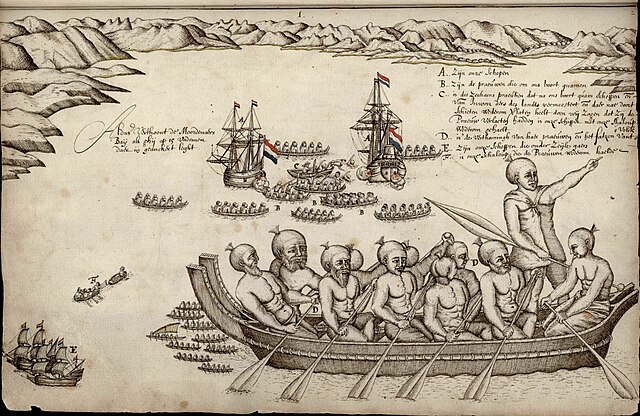The Boyd massacre occurred in December 1809 when Māori of Ngāti Pou from Whangaroa Harbour in northern New Zealand killed and ate between 66 and 70 European crew members from the British brigantine ship Boyd. This was the highest number of Europeans killed by Māori in a single event in New Zealand.
The Blowing Up of the Boyd by Louis John Steele, 1889
Portrait of Elizabeth "Betsey" Broughton, painted in Sydney in 1814 by convict artist Richard Read Sr., National Library of Australia
Māori are the indigenous Polynesian people of mainland New Zealand. Māori originated with settlers from East Polynesia, who arrived in New Zealand in several waves of canoe voyages between roughly 1320 and 1350. Over several centuries in isolation, these settlers developed their own distinctive culture, whose language, mythology, crafts, and performing arts evolved independently from those of other eastern Polynesian cultures. Some early Māori moved to the Chatham Islands, where their descendants became New Zealand's other indigenous Polynesian ethnic group, the Moriori.
Māori performing a haka (2012)
Early Archaic period objects from the Wairau Bar archaeological site, on display at the Canterbury Museum in Christchurch
Model of a pā (hillfort) built on a headland. Pā proliferated as competition and warfare increased among a growing population.
The first European impression of Māori, at Murderers' Bay in Abel Tasman's travel journal (1642)






